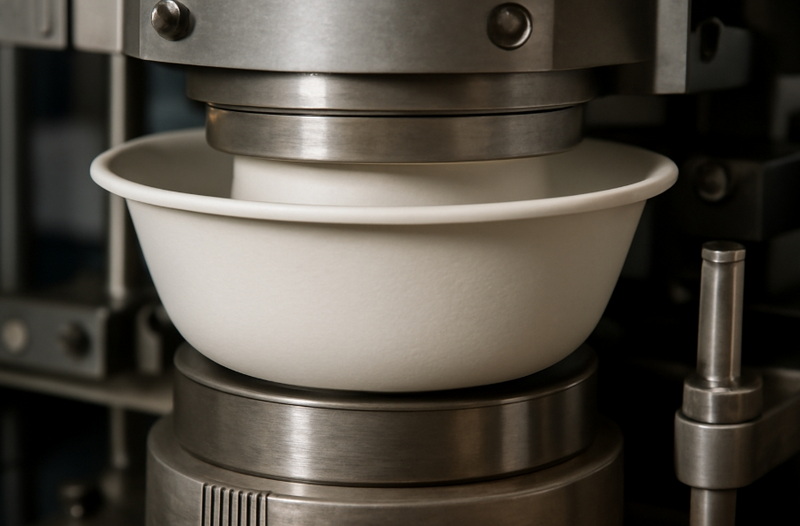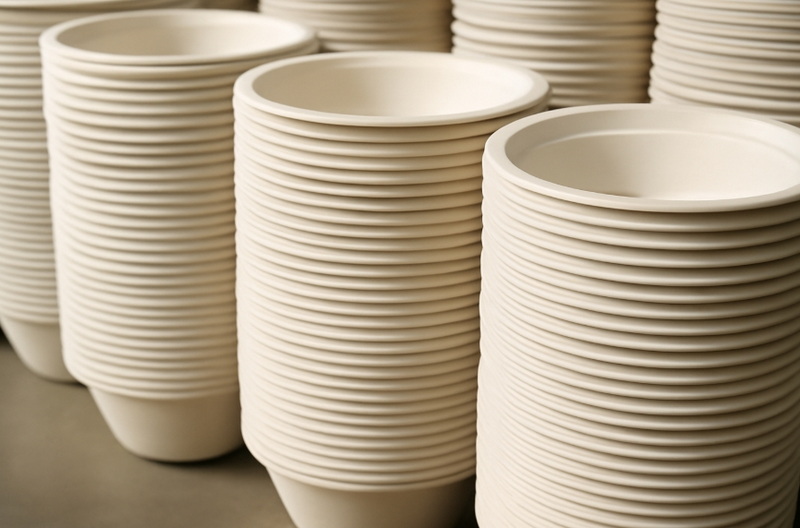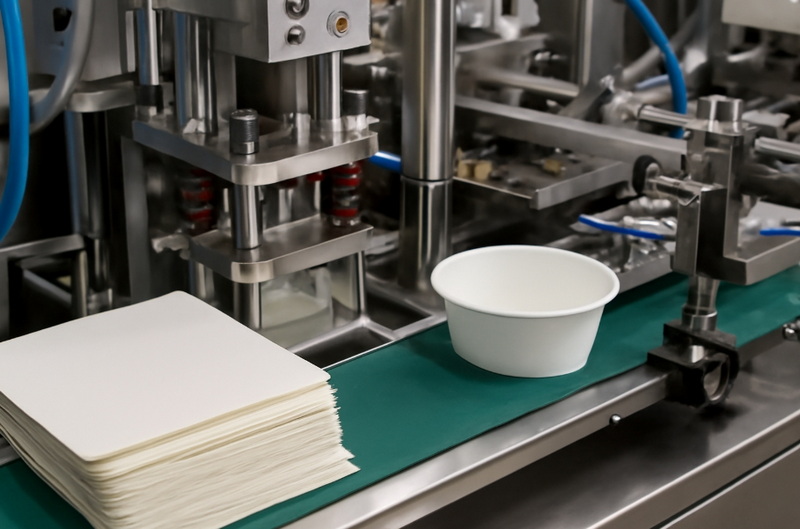
Content Menu
● Introduction to Disposable Bowl Machines
● The Step-by-Step Production Process
>> 1. Raw Material Preparation
>> 2. Paper Feeding and Unwinding
>> 3. Printing and Die-Cutting
>> 4. Forming the Bowl Wall
>> 5. Bottom Insertion and Sealing
>> 6. Rim Curling and Shaping
>> 7. Cooling and Quality Control
>> 8. Collection and Packing
● Key Components of a Disposable Bowl Machine
● Automation and Intelligent Control
● Maintenance and Troubleshooting
● Advantages of Using Disposable Bowl Machines
● Applications and Versatility
● Conclusion
● FAQ
>> 1. How does a disposable bowl machine ensure leak-proof bowls?
>> 2. Can a disposable bowl machine handle different bowl sizes and materials?
>> 3. Is it difficult to operate a disposable bowl machine?
>> 4. What maintenance does a disposable bowl machine require?
>> 5. What are the main safety features of a disposable bowl machine?
Disposable bowl machines have changed the landscape of food packaging, making it possible to produce large quantities of eco-friendly, hygienic, and customizable paper bowls with remarkable efficiency. These machines combine advanced automation, precision engineering, and intelligent control systems to transform raw paper materials into finished disposable bowls used for salads, soups, noodles, and a wide range of other foods. This in-depth article explores how a disposable bowl machine operates, the detailed processes involved, its key components, and the significant advantages it brings to modern manufacturing.

Introduction to Disposable Bowl Machines
Disposable bowl machines are specialized equipment designed to automate the production of paper bowls. These machines are essential in the food packaging sector, providing a sustainable alternative to plastic containers. By using coated paper-often with single or double layers of polyethylene (PE)-these machines create strong, leak-proof bowls suitable for both hot and cold foods. Their popularity is driven by the growing demand for environmentally friendly packaging and the need for high-speed, reliable production lines.
The Step-by-Step Production Process
The operation of a disposable bowl machine involves several automated stages, each crucial to ensuring the quality and consistency of the final product.
1. Raw Material Preparation
The process begins with the selection of suitable paper materials. Manufacturers typically use PE-coated paper, which offers water and oil resistance. The paper is provided either in roll form or as pre-cut sheets, depending on the machine's design and the desired bowl size.
2. Paper Feeding and Unwinding
The paper roll is loaded onto the machine's feeding system. Advanced machines feature automatic unwinding mechanisms that maintain consistent tension and feed rate, ensuring smooth operation and minimizing material waste.
3. Printing and Die-Cutting
For branded or decorative bowls, the paper passes through a printing unit where custom designs, logos, or patterns are applied. After printing, the paper is die-cut into fan-shaped blanks for the bowl walls and circular blanks for the bowl bottoms. This step ensures precision and reduces excess material.
4. Forming the Bowl Wall
The fan-shaped paper blank is automatically transferred to the forming station. Here, a combination of heat, pressure, and mechanical forming shapes the paper into a cylindrical wall. The edges are overlapped and sealed using heat or ultrasonic welding, creating a strong, leak-proof seam.
5. Bottom Insertion and Sealing
A circular bottom blank is punched from the roll and positioned at the base of the formed wall. The machine then applies heat and pressure to bond the bottom to the wall, using knurling or curling to ensure a tight, leak-resistant seal. This step is crucial for the bowl's structural integrity and its ability to hold liquids.
6. Rim Curling and Shaping
The rim of the bowl is curled outward, creating a smooth, reinforced edge that adds strength and allows for secure stacking and lid attachment. This process is performed by a dedicated curling station, which uses heat and mechanical force for a uniform finish.
7. Cooling and Quality Control
Some high-speed machines incorporate a cooling system to prevent overheating and ensure the bowl retains its shape without burn marks. Automated quality control systems, such as photoelectric sensors, check for defects, incomplete seals, or shape irregularities. Faulty bowls are automatically rejected.
8. Collection and Packing
Finished bowls are ejected from the forming station and collected in stacks. Many production lines include automatic packing machines that bag and box the bowls, ensuring hygienic handling and efficient logistics.
Key Components of a Disposable Bowl Machine
Understanding the main parts of a disposable bowl machine highlights its complexity and efficiency.
- Bowl Forming Mechanism: The heart of the machine, responsible for shaping and sealing the bowl.
- Paper Feeding System: Ensures a steady supply of raw material, with tension control and automatic unwinding.
- Heating Elements: Used for sealing and shaping, often employing hot air or ultrasonic technology.
- Die-Cutting Unit: Cuts paper into precise shapes for the bowl wall and bottom.
- Curling and Knurling Stations: Reinforce the rim and bottom for strength and leak resistance.
- Control Panel: Provides an interface for operators to set parameters, monitor production, and receive alerts.
- Lubrication and Maintenance Systems: Keep moving parts running smoothly and minimize downtime.
- Safety Features: Include emergency stops, guards, and fault detection systems for operator protection.

Automation and Intelligent Control
Modern disposable bowl machines are highly automated, reducing manual intervention and increasing production speed. Touchscreen control panels allow operators to adjust settings for different bowl sizes, materials, and production speeds. Real-time monitoring, automatic fault detection, and maintenance alerts enhance reliability and minimize waste.
Advanced models use servo motors and programmable logic controllers (PLC) for precise movement and synchronization of each production stage. This results in consistent quality, high output rates, and the flexibility to switch between different bowl designs with minimal downtime.
Maintenance and Troubleshooting
Regular maintenance is essential for optimal performance and longevity of a disposable bowl machine. Key practices include:
- Routine Cleaning: Removing dust, paper scraps, and debris to prevent jams and contamination.
- Lubrication: Applying lubricant to moving parts as recommended to reduce wear.
- Inspection and Replacement: Checking belts, bearings, and seals for wear and replacing as needed.
- Software Updates: Ensuring the control system is up to date for improved functionality and security.
- Training: Operators should receive comprehensive training on setup, operation, and basic troubleshooting to quickly resolve issues and maintain safety standards.
Advantages of Using Disposable Bowl Machines
Disposable bowl machines offer a range of benefits that make them indispensable in food packaging:
- High Efficiency: Automated production lines deliver thousands of bowls per hour, meeting large-scale demand.
- Consistency and Quality: Precision engineering ensures uniform bowl size, shape, and strength.
- Customization: Supports various bowl sizes, shapes, and printed designs for branding and marketing.
- Eco-Friendly Options: Compatible with biodegradable and recyclable materials, supporting sustainability goals.
- Cost-Effectiveness: Reduces labor costs and material waste through intelligent automation.
- Safety and Hygiene: Minimizes human contact with finished products, ensuring sanitary packaging.
Applications and Versatility
Disposable bowl machines are used to manufacture a wide variety of products, including:
- Salad bowls
- Soup bowls
- Noodle containers
- Ice cream bowls
- Snack and dessert containers
They are suitable for both single and double PE-coated paper, as well as biodegradable materials, making them adaptable to changing market demands and environmental regulations.
Conclusion
Disposable bowl machines represent the pinnacle of automated food packaging technology, transforming raw paper materials into durable, hygienic, and customizable bowls at remarkable speeds. Their sophisticated design, intelligent controls, and robust safety features make them essential for manufacturers seeking efficiency, quality, and sustainability. As consumer demand for eco-friendly packaging grows, the role of disposable bowl machines will only become more prominent in the global marketplace.

FAQ
1. How does a disposable bowl machine ensure leak-proof bowls?
A disposable bowl machine uses a combination of heat sealing, knurling, and precise mechanical forming to bond the bowl wall and bottom securely. The sealing process is carefully controlled to prevent gaps or weak points, ensuring the finished bowl can hold liquids without leaking.
2. Can a disposable bowl machine handle different bowl sizes and materials?
Yes, most modern disposable bowl machines are designed for versatility. They can be adjusted to produce various bowl sizes and depths, and are compatible with different types of paper, including single or double PE-coated and biodegradable materials.
3. Is it difficult to operate a disposable bowl machine?
Operating a disposable bowl machine is generally straightforward, thanks to user-friendly interfaces and automated controls. However, proper training is essential to understand setup, parameter adjustment, and basic troubleshooting for efficient and safe operation.
4. What maintenance does a disposable bowl machine require?
Regular cleaning, lubrication of moving parts, inspection and replacement of worn components, and software updates are necessary to keep the machine running smoothly. Routine maintenance minimizes downtime and extends the machine's lifespan.
5. What are the main safety features of a disposable bowl machine?
Disposable bowl machines are equipped with emergency stop buttons, protective guards, fault detection systems, and enclosed working areas to protect operators and ensure safe operation during high-speed production.

















